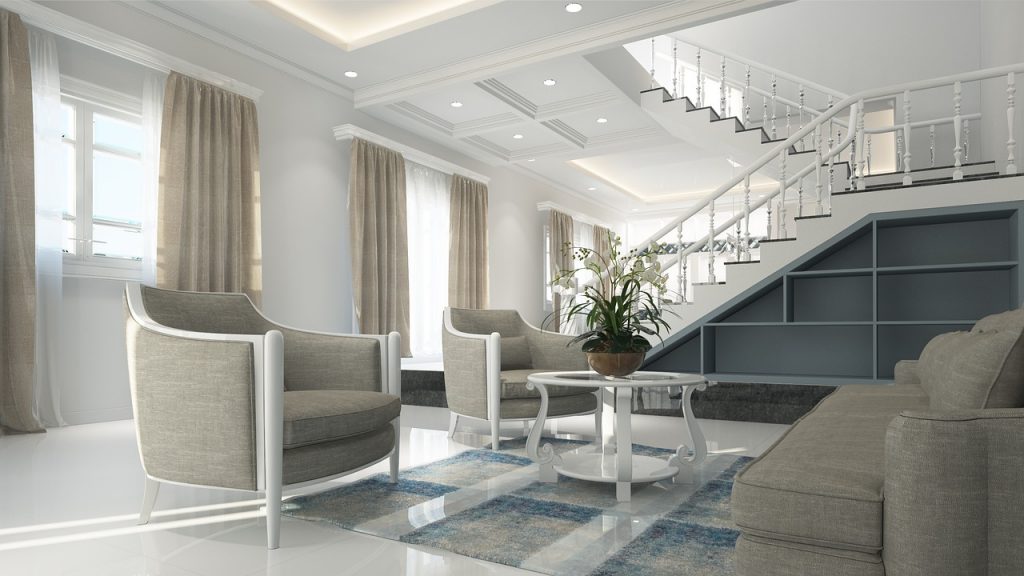Given the fact that Connecticut home renovations can often cost thousands of dollars and take many weeks to fully complete. It makes sense that protecting a newly renovated interior would be a priority. There are so many things that can go wrong to damage or tarnish your brand-new additions. Therefore taking a multi-faceted approach to home protection is always wise. With that said, here are 8 tips for protecting a newly renovated interior from every angle:
1. Install a New Home Security System To Protect Your Newly Renovated Interior
Even if you already have a few cameras set up, there’s a good chance that they’re not ideally positioned to record your newly renovated interiors. Therefore at the very least you may need to make some adjustments to your current system. Ideally, you should try to upgrade to the latest security technology. This will ensure you’re getting the clearest and most reliable view of your property. You can easily find plenty of options to compare by searching for “the best home security systems 2019”.
2. Use Covers and Rugs to Protect Flooring & Furniture
Many types of flooring can become damaged very quickly. All it takes is one big scratch or stain to significantly tarnish an otherwise perfect floor. Some furniture is also very fragile, and yet it can also be quite expensive. It may be tempting to leave your floor and furniture uncovered for optimal aesthetic appeal. However, consider the advantages of using covers and rugs to protect them from mishaps. Revealing their surfaces when you have guests.
3. Use Sealants and Coatings to Protect Surfaces
The integrity of walls, countertops, and floors can be protected from general wear and tear by applying protective coatings and sealants. Be sure to do your research to find out which options are best for your particular use case. Applying the wrong kind of product could be disastrous.
4. Move Furniture Cautiously
Most people will relocate their furniture temporarily while newly renovated interiors are taking place. It’s extremely important that you make sure those furniture pieces are put back with extreme caution. Make sure everyone involved understands the importance of moving slowly and methodically. This will avoid dinging, scraping, or breaking newly renovated interiors and décor.
5. Practice Thorough Tenant Screening if You’re Renting
If you’re going to be renting the property to a tenant it’s wise to be very selective about who you let live in your home . Problem tenants could wind up damaging your property and also costing you money by going delinquent on their rent. If you’re not taking steps to rent to the right people as a landlord, you’re putting your home at risk.
6. Have a List of House Rules To Protect Your Newly Renovated Interior
It’s imperative that everyone is on the same page about protecting your newly renovated interior. Simply telling everyone to be careful usually isn’t enough to get the job done. Take the time to create a list of house rules instead. You can post these rules on the refrigerator to serve as a constant reminder. This is a particularly important step to take if you have children, which bring us to our next point.
7. Make Sure the Kids Are On Board
If they’re not sufficiently disciplined and supervised properly, kids can cause an absurd amount of damage very quickly. A family with children should ensure that the little ones understand the seriousness of not breaking any of the house rules. Devise a reasonable system of punishment that implements appropriate consequences for violations of the house rules.
8. Have a Set Maintenance Schedule
Eventually, there will come a time when maintenance will be required. Even if you took all of the aforementioned precautions. Maintenance is only needed every so often. However, it can be easy to lose track of when you’re supposed to perform these tasks. Therefore, it’s best to go ahead and post a maintenance schedule. This will serve as a reminder of when maintenance procedures will be required next.
Prevention is Always Better Than Repair
Ultimately, all of the steps listed will help you avoid the often exuberant cost of repairs. These are precautions that are worthwhile for every homeowner who has a newly renovated interior.
This post is a collaboration and may contain relevant and relatable affiliate links that are either informational or helpful resources. All opinions are our own and for informational purposes only.



